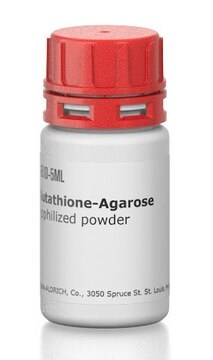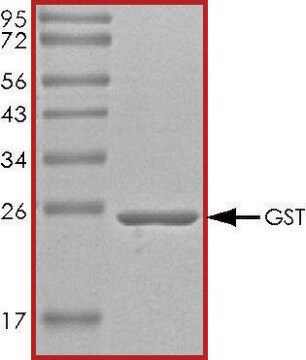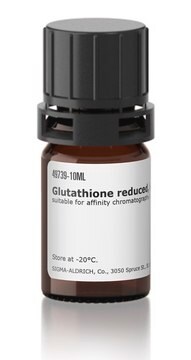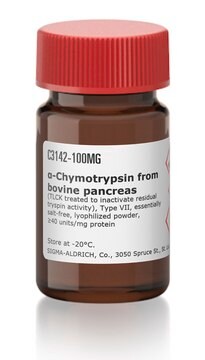A8580
Anti-Glutathione-S-Transferase (GST)–Agarose antibody produced in rabbit
IgG fraction of antiserum, PBS suspension
Synonym(s):
Anti-Glutathione-S-Transferase, Anti-GST
About This Item
Recommended Products
biological source
rabbit
Quality Level
conjugate
agarose conjugate
antibody form
IgG fraction of antiserum
antibody product type
primary antibodies
clone
polyclonal
form
PBS suspension
mol wt
antigen 27.5 kDa
should not react with
porcine, bovine, human, rabbit, rat
technique(s)
ELISA: suitable
immunoprecipitation (IP): suitable
shipped in
wet ice
storage temp.
2-8°C
target post-translational modification
unmodified
Gene Information
human ... GSTP1(2950)
Looking for similar products? Visit Product Comparison Guide
General description
Immunogen
Application
Biochem/physiol Actions
Physical form
Preparation Note
Disclaimer
Not finding the right product?
Try our Product Selector Tool.
Storage Class Code
10 - Combustible liquids
WGK
WGK 1
Flash Point(F)
Not applicable
Flash Point(C)
Not applicable
Choose from one of the most recent versions:
Already Own This Product?
Find documentation for the products that you have recently purchased in the Document Library.
Our team of scientists has experience in all areas of research including Life Science, Material Science, Chemical Synthesis, Chromatography, Analytical and many others.
Contact Technical Service








